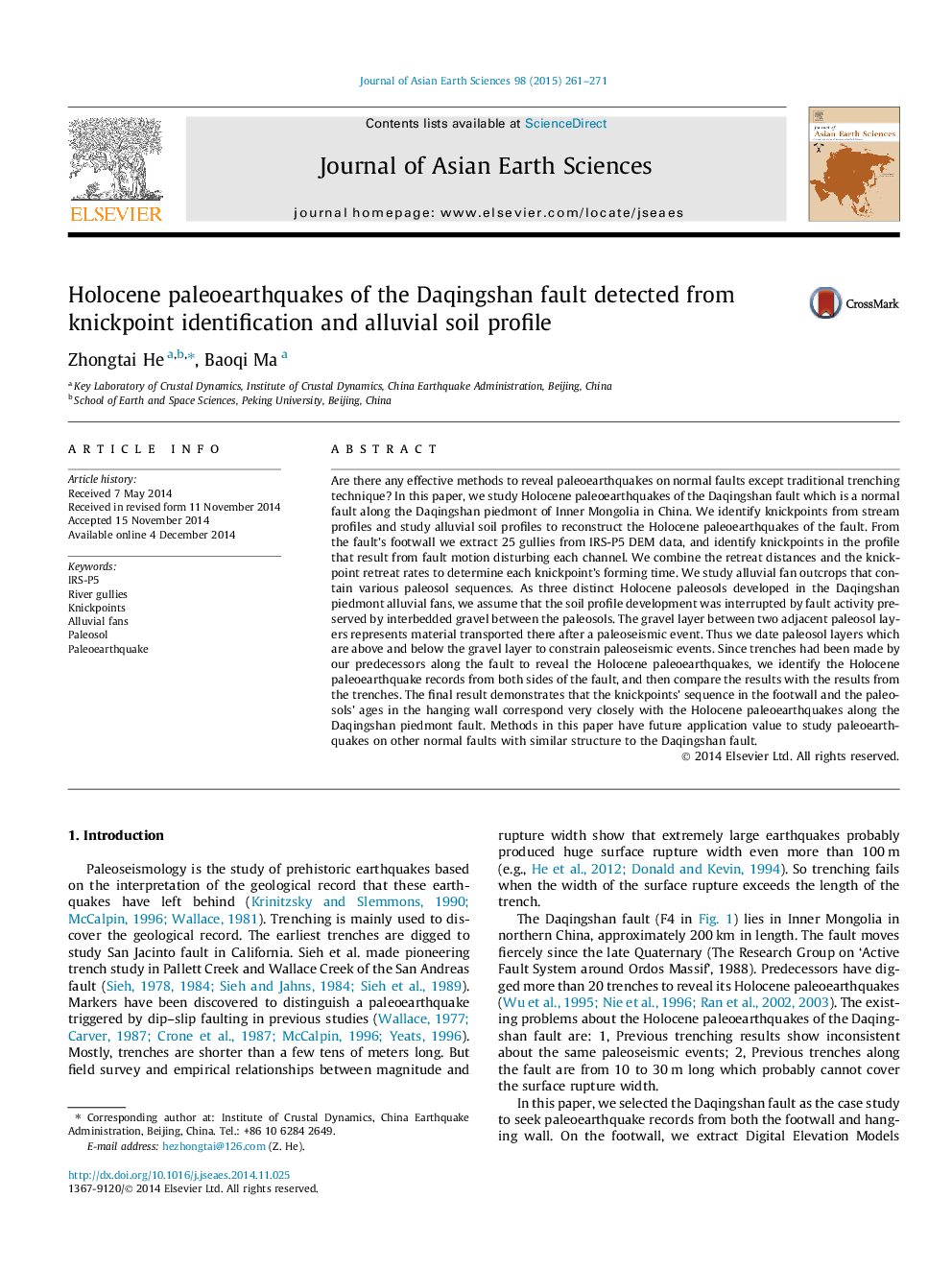| Article ID | Journal | Published Year | Pages | File Type |
|---|---|---|---|---|
| 6444341 | Journal of Asian Earth Sciences | 2015 | 11 Pages |
Abstract
Are there any effective methods to reveal paleoearthquakes on normal faults except traditional trenching technique? In this paper, we study Holocene paleoearthquakes of the Daqingshan fault which is a normal fault along the Daqingshan piedmont of Inner Mongolia in China. We identify knickpoints from stream profiles and study alluvial soil profiles to reconstruct the Holocene paleoearthquakes of the fault. From the fault's footwall we extract 25 gullies from IRS-P5 DEM data, and identify knickpoints in the profile that result from fault motion disturbing each channel. We combine the retreat distances and the knickpoint retreat rates to determine each knickpoint's forming time. We study alluvial fan outcrops that contain various paleosol sequences. As three distinct Holocene paleosols developed in the Daqingshan piedmont alluvial fans, we assume that the soil profile development was interrupted by fault activity preserved by interbedded gravel between the paleosols. The gravel layer between two adjacent paleosol layers represents material transported there after a paleoseismic event. Thus we date paleosol layers which are above and below the gravel layer to constrain paleoseismic events. Since trenches had been made by our predecessors along the fault to reveal the Holocene paleoearthquakes, we identify the Holocene paleoearthquake records from both sides of the fault, and then compare the results with the results from the trenches. The final result demonstrates that the knickpoints' sequence in the footwall and the paleosols' ages in the hanging wall correspond very closely with the Holocene paleoearthquakes along the Daqingshan piedmont fault. Methods in this paper have future application value to study paleoearthquakes on other normal faults with similar structure to the Daqingshan fault.
Related Topics
Physical Sciences and Engineering
Earth and Planetary Sciences
Geology
Authors
Zhongtai He, Baoqi Ma,
